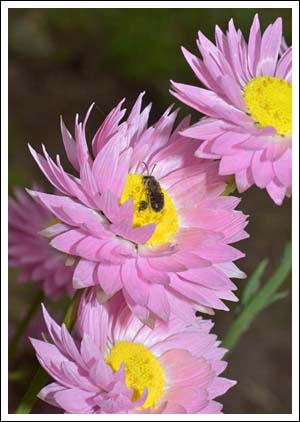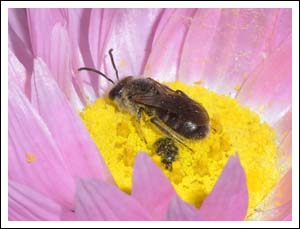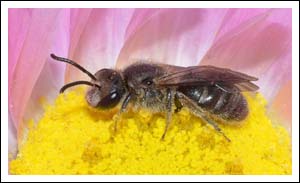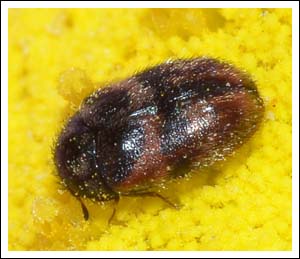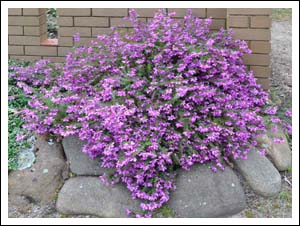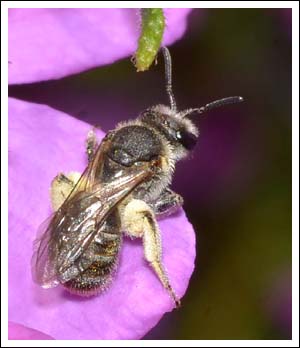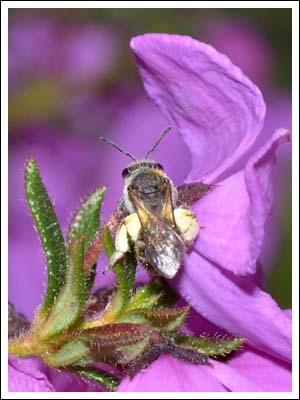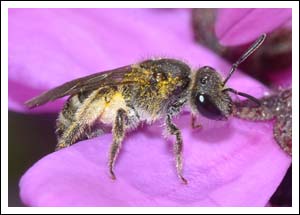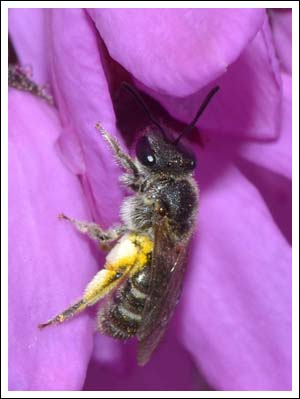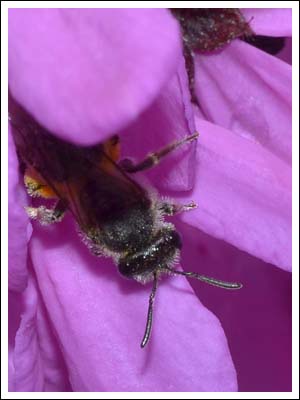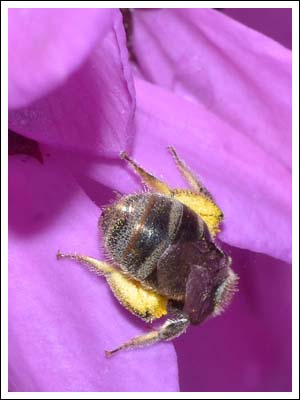A recent tweet by @conversationEDU noted that a garden is a thriving ecosystem, and taking that concept further, the type of garden dictates to a large extent the type of ecosystem. This garden comprises native trees, shrubs, and herbaceous plants, and the fauna reflects that vegetation mix, from the smallest invertebrate to the top of the food chain, the birds and microbats. It must be noted too that specific families/genera/species of fauna can be encouraged to take their place in the ecosystem by suitable planting. This will be the first garden based post with more to come as the seasons wax and wane. The subject is native bees that are increasing in abundance with the establishment of their food plants, and the provision of suitable breeding habitat for some species. Bulbine Lilies are popular, Paper Daisies less so but attractive to hover flies and pollen beetles, and featured in this post, Tetratheca thymifolia, where on a sunny day there was a whirling of female bees gathering pollen and nectar for larval food. First though, the Paper Daisies, where occasionally male bees can be found apparently just resting, often in the company of tiny pollen beetles.
Male bee.
Pollen beetle, possibly Trogoderma species, 2.5 mm long.
Tetratheca thymifolia, an excellent garden plant.
Female bees showing harvested pollen.
Sequence of female bee entering and leaving flower.
The bees shown are Lasioglossum species. either lanarium or brunessetum, it is difficult to be more precise from the photos. Thanks to Mitch for id help. Click images to enlarge.
References.
Mitch Smith.
Insects of South-Eastern Australia by Roger Farrow.

